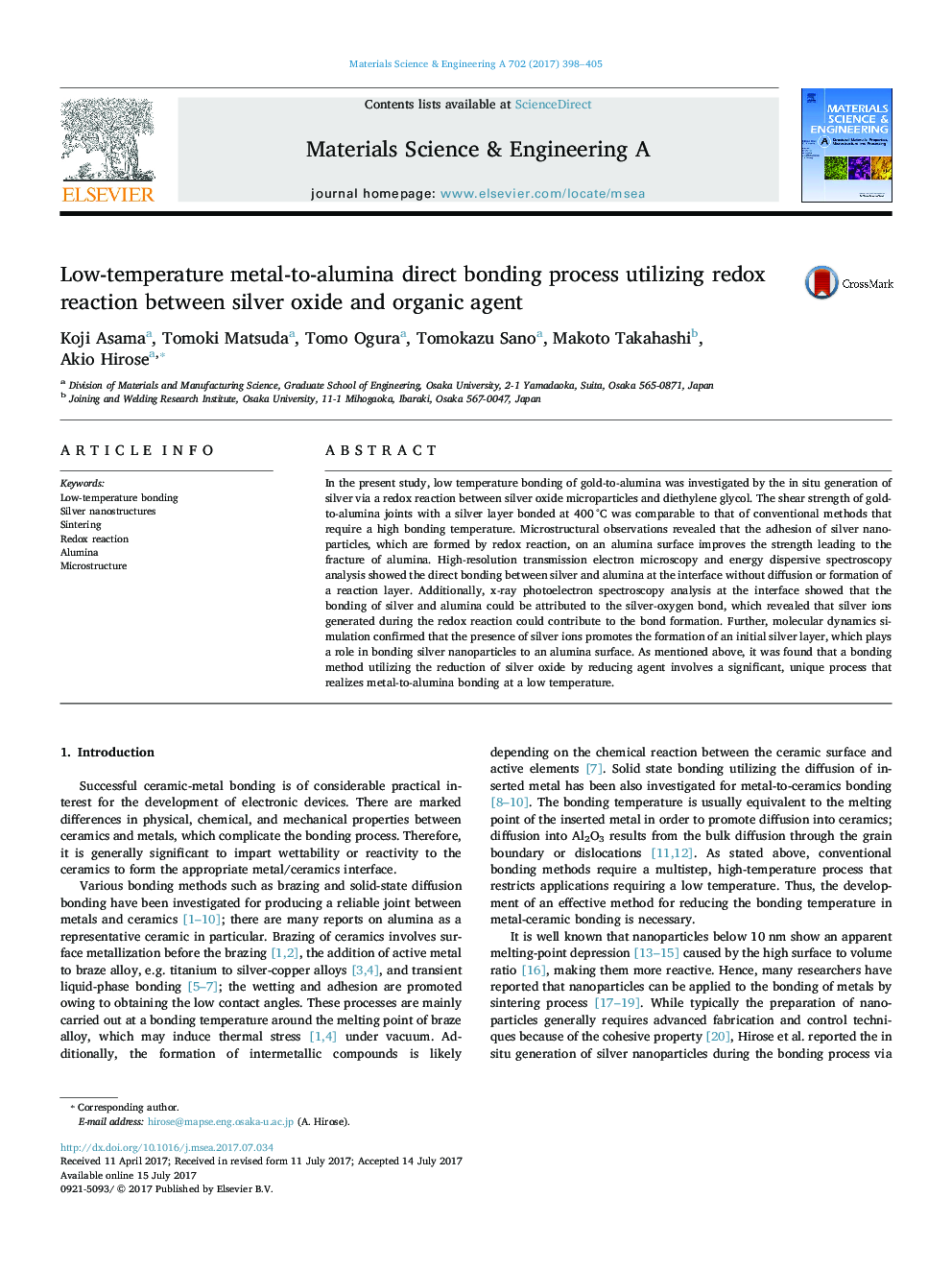| Article ID | Journal | Published Year | Pages | File Type |
|---|---|---|---|---|
| 5455851 | Materials Science and Engineering: A | 2017 | 8 Pages |
Abstract
In the present study, low temperature bonding of gold-to-alumina was investigated by the in situ generation of silver via a redox reaction between silver oxide microparticles and diethylene glycol. The shear strength of gold-to-alumina joints with a silver layer bonded at 400 °C was comparable to that of conventional methods that require a high bonding temperature. Microstructural observations revealed that the adhesion of silver nanoparticles, which are formed by redox reaction, on an alumina surface improves the strength leading to the fracture of alumina. High-resolution transmission electron microscopy and energy dispersive spectroscopy analysis showed the direct bonding between silver and alumina at the interface without diffusion or formation of a reaction layer. Additionally, x-ray photoelectron spectroscopy analysis at the interface showed that the bonding of silver and alumina could be attributed to the silver-oxygen bond, which revealed that silver ions generated during the redox reaction could contribute to the bond formation. Further, molecular dynamics simulation confirmed that the presence of silver ions promotes the formation of an initial silver layer, which plays a role in bonding silver nanoparticles to an alumina surface. As mentioned above, it was found that a bonding method utilizing the reduction of silver oxide by reducing agent involves a significant, unique process that realizes metal-to-alumina bonding at a low temperature.
Related Topics
Physical Sciences and Engineering
Materials Science
Materials Science (General)
Authors
Koji Asama, Tomoki Matsuda, Tomo Ogura, Tomokazu Sano, Makoto Takahashi, Akio Hirose,
